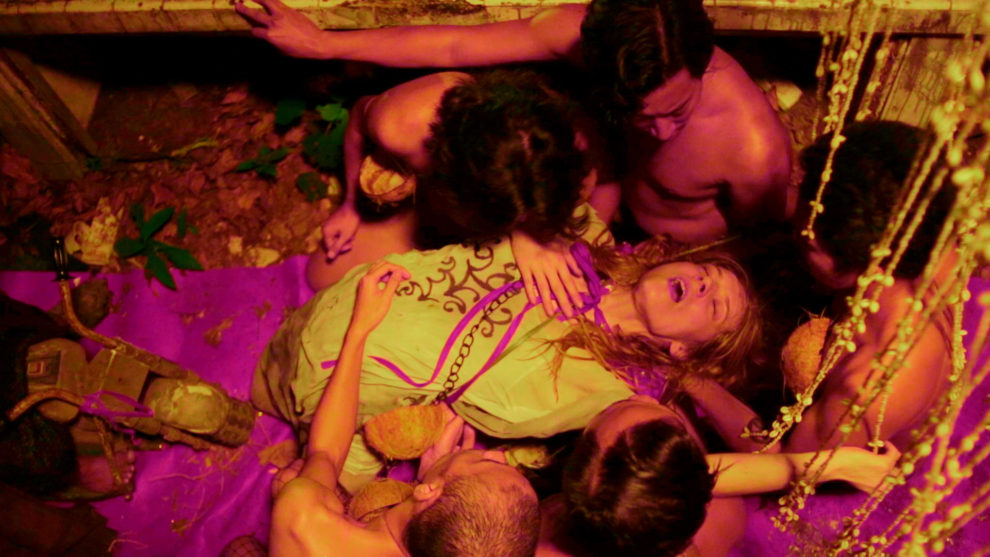What started in “Orphea” where Khavn turned the Greek myth on its head by having Orpheus being a woman and Euridice a man, finds its apogee in the Bukowski-loaned “Love is a Dog from Hell”, one of the best works of the Filipino's vast filmography.
“Love is a Dog from Hell” is available from Rapid Eye Movies
Beginning with a number of stills and the sound of a voice reciting poetry, the stillness gives its place to the perpetual movement that characterizes the movie, starting with a live performance in the slums of Manila, introducing the protagonist, Orphea, shining within the grotesqueness of the environment she inhabits. A discussion in a night club about the benefits of slavery soon gives its place to violence, with the film gradually becoming a mixture of road movie and musical, as the the protagonist finds out about the death of her beloved Euridico, but still insists on searching for him, even if her travels bring her down to hell.

The juxtaposition of different contextual and cinematic elements continues in the rest of the movie, with Khavn and his DPs, Albert Banzon and Gym Lumbera using 10 different cameras (including Super8) in order to present a cornucopia of different colors, contrasts, hues and definitions, the chaos that is “Love is a Dog From Hell”. Images that look like kaleidoscopic paintings, footage from a documentary (?) about a medical procedure, Orphea sawing and “playing” with a pig's head, the titles appearing in the middle of the movie, a man who speaks in repeated sounds (Vim Nadera from “Ruined Heart”) while the subtitles present his words in a sort of a translation, frantic laughters, a penis peeing, the slums, space sounds combined with spacey images and colors, and animation by Rox Lee all come together in the most artfully twisted way, courtesy of Lawrence S. Ang's frantic, absurd, but rather fitting editing.
The music by Khavn also moves in the same paths, combining punk, rock, electronica, pop and everything in between, brought together in an amalgam that is occasionally playful, hopeful, sad and scary, in perfect resonance with the overall aesthetics of the movie. Lilith Stangenberg's fairy-like voice seems out of place on a number of occasions, but in the end, and in an uncanny way, totally makes sense, essentially adding to the varying atmosphere of the title.
And talking about Stangenberg, “Love is a Dog from Hell” is a true triumph for her, as Khavn asked everything from her, and she delivered in the most impressive fashion. Apart from singing, dancing, and sawing pigs, Orphea also crawls in the mud, vomits, climbs trees, plays with kids in punk haircuts courtesy of Khavn, fakeplays a guitar, walks all over the place in her heels and red cape, and in general, does it all, in a truly hard-working performance that embodies the style of the whole production perfectly.
“Love is a Dog from Hell” is not a film for everybody, as Khavn's cinema is anything but mainstream or even art house for that matter. At the same time, however, it is a celebration of letting your (cinematic) imagination completely loose, a triumph of the absurd and the grotesque, and a masterclass on how chaos can be presented artfully on screen.















